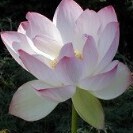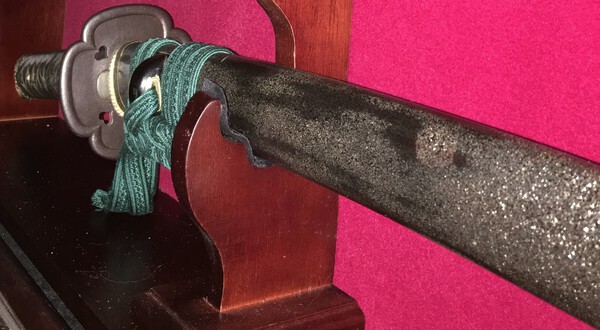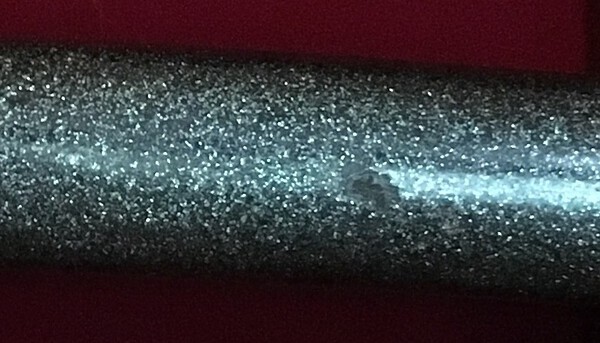-
Posts
454 -
Joined
Content Type
Profiles
Forums
Events
Store
Downloads
Gallery
Everything posted by Franco D
-
A few thoughts since you are considering a full restoration. It would be wise to have the sword papered first to ensure that everything is proper before having this sword polished. Then, use this time waiting for a shinsa to both research which polisher to choose and reserve a spot with that polisher. You can "search" here on NMB for previous threads for names of recommended polishers. Generally, the polisher will line up a habaki and shirasaya maker as part of the process. Not all polishers are equal, so choose wisely. Regards
-
Thinking aloud. This sword could be pushing early Shinto based upon shape. Perhaps, even Momoyama. Earlier, hmm. Boshi, more Shinto-ish. Do we see hints of Yakidashi on the ura? Polish, color of jitetsu, sure looks Shinto-ish. Kantei based upon images is always a risk.
-

How to remove green corrosion?
Franco D replied to Yumso's topic in General Nihonto Related Discussion
As with nihonto the cost of restoration vs value becomes a factor in restoring fittings. Regards -
Well then, the patina would make the nakago older than the rest of the sword. Unfortunately it doesn't work that way. Sorry, no. You might try asking in the translation forum for a translation of the sayagaki. Regards
-

How to remove green corrosion?
Franco D replied to Yumso's topic in General Nihonto Related Discussion
For clarification/explanation, my bad. Yes, you are not oiling your fittings. Sword oil is used during the process of arresting the verdigris. In the end, when satisfied that the verdigris is completely gone and not coming back, I clean the final surface with the alcohol. Regards -
Shinto is probably the correct time frame. Regards
-
Could we please see the boshi and area of the hamachi? Thank you. Regards
-
If possible it would be nice to see closer/better images of the kissaki/boshi and this area of small kizu? Asking because otherwise this looks like a fairly healthy blade. Thanks. Regards
-

How to remove green corrosion?
Franco D replied to Yumso's topic in General Nihonto Related Discussion
The problem here is oiling and toothbrushing while possibly removing some of the verdigris may not solve the problem nor achieve the result desired. The kashira shows signs (at least to me) of having been exposed and damaged by something chemically corrosive. It needs more attention than simple cleaning, like professional help. The shitadome on the kashira look embedded with verdigris. Proper cleaning will require removing them for cleaning. Unless all of the green is removed and properly treated there will be a good chance that over time it will come back. Getting oil and/or water on and soaked into the ito during the cleaning process may only make the problems become worse. While the fuchi/kashira may be Nara school fittings, the damaged kashira may bring the effort to save them into question. Since the fuchi is apart it can be cleaned. I would begin by using a soft wooden toothpick to very gently scrape and loosen the verdigris. Then, using a soft cotton Q-tip dipped in anti-hydrous isopropyl alcohol wipe away the loosened verdigris. Repeat that process until gone. The, once you're convinced the surface is clean, again, using a soft tipped Q-tip apply a thin film of good neutral light sword oil. It is always wise to do a test spot somewhere inconspicuous to be sure what you're applying is safe and is not doing any harm. p.s. change soiled Q-tips, do not reuse once soiled. On a personal note, it looks to me as if this entire tsuka and wrap needs to be redone. Regards -

How to remove green corrosion?
Franco D replied to Yumso's topic in General Nihonto Related Discussion
No! Vinegar is acidic and that should definitely not be used. Because these are mounted fittings I would consult with a professional first before attempting to clean these. Loose fittings are a different story. Regards -
Chu kissaki is sometimes described as being elongated. Based upon the image that appears to be the case here. Regards
-
Study, build a library, when he feels there is nothing more to learn from this sword, then, if he chooses, he can move on. Regards p.s. Although I did not really get to know him well before he died, Allan H. Pressley is where my path to learning nihonto began more than thirty years ago. Chicago was the first show I attended.
-
It appears that the new caretaker has some homework ahead of him. https://www.nihontoc.../Mihara_Nihonto.html Good first sword! Regards
-
The section of the saya I posted above comes from an old original saya that could date anywhere from the early part of 1700's onward. This saya/koshirae was most definitely used and even sports an old repair that is visible in the image above. In the image below the obi wear is clearly visible. The change in color is due to the lighting.
-
Yes, urushi lacquer. Don't recall anything else being mentioned.
-
-
Please forgive me Piers for posting additional pertinent information.
-
What exactly is that supposed to mean?
-
https://nihonto.com/12-1-23/ also; Hoki school/tradition, Yamanaka's Newsletters revised, page 248.
-
That is a definite possibility. If that is indeed the case, then it appears that the polisher did not reshape the entire kissaki as what should have been done. However, as Ray said, it does appear like some boshi remains. Regards
-

Wakizashi genuine signature/mei?
Franco D replied to VRGC's topic in General Nihonto Related Discussion
Prices cover a wide range starting from hundreds rising to tens of thousands. It all depends on age, rarity, quality (Juyo), style, and originality. For example; https://nihonto.com/...e/fittings/koshirae/ Regards -
That website does recycle articles over and over again, in addition to tracking the topics you favor. Still, that is a sword that one never grows tired of seeing again and again. Regards
-

Just inherited a Japanese Sword
Franco D replied to 25 yr Navy Vet's topic in Translation Assistance
Please do. Full image of entire sword, with close ups of the boshi (tip) and full nakago, for starters. Condolences for your Grandfather. Thank you. Regards -

Wakizashi genuine signature/mei?
Franco D replied to VRGC's topic in General Nihonto Related Discussion
Comments, Regardless of what the mei turns out to be this sword has a very pleasing shape, a sign of a good sword. It also has a suguha hamon which is another indication of a skilled swordsmith. As far as the mei goes, it is likely that the list of smiths signing "Kanda (no) Ju Kane 囗" is short and will appear in Hawley's (which I no longer have). Which gives a place to begin research. Regards







